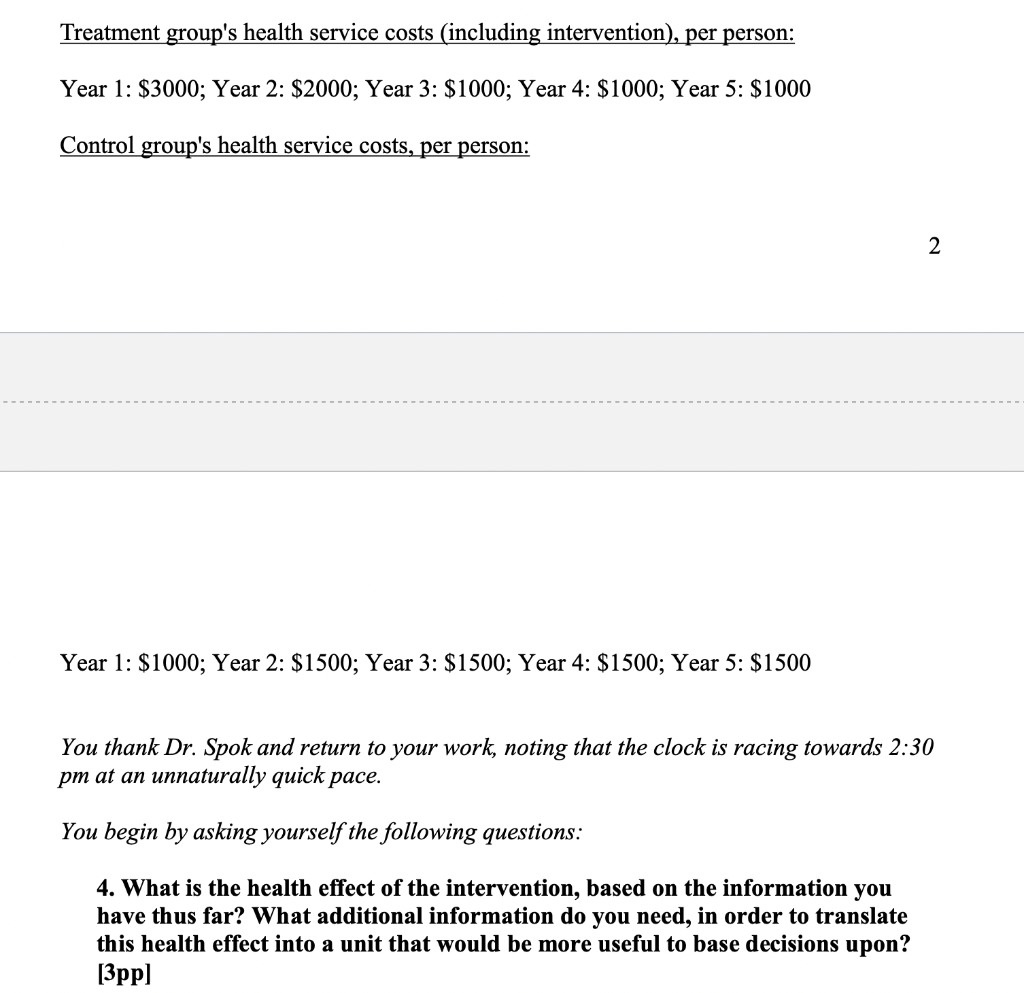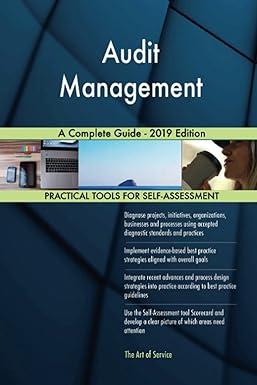


You call Dr. Spok back and ask first about who the audience will be for the analysis. He is silent for several seconds, then says, "Great question. We hadn't thought that through entirely. I guess our primary audiences would be U-M as our employer...also other employers who might think about adopting our intervention. I also think that society in general should be interested in our results, though, because the intervention looks so promising!" In response to your request for more data, Dr. Spok then tells you the following: "For simplicity we've focused on two dichotomous measures: whether people are obese and whether they have high blood pressure (systolic over 140 or diastolic over 90). After one year, the breakdown for each group was as listed below, and it has remained exactly that way in each of the following four years:" Treatment group: Obese, high BP Obese, normal BP Normal weight, high BP Normal weight, normal BP 20% 20% 30% 30% Control group: Obese, high BP Obese, normal BP Normal weight, high BP Normal weight, normal BP 25% 25% 25% 25% Dr. Spok continued, "We had a health economist who also tracked all health service costs carefully, including the direct costs of our intervention. She recently left our group to work for the WHO, which is why we need your help now. She left with little warning, but fortunately left this note behind: Treatment group's health service costs (including intervention), per person: Year 1: $3000; Year 2: $2000; Year 3: $1000; Year 4: $1000; Year 5: $1000 Control group's health service costs, per person: 2 Year 1: $1000; Year 2: $1500; Year 3: $1500; Year 4: $1500; Year 5: $1500 You thank Dr. Spok and return to your work, noting that the clock is racing towards 2:30 pm at an unnaturally quick pace. You begin by asking yourself the following questions: 4. What is the health effect of the intervention, based on the information you have thus far? What additional information do you need, in order to translate this health effect into a unit that would be more useful to base decisions upon? [3pp] 5. What are the incremental health care costs of the intervention (relative to the control group) over the five-year time frame? Does the year-to-year pattern of incremental costs look reasonable to you? [2pp] You call Dr. Spok back and ask first about who the audience will be for the analysis. He is silent for several seconds, then says, "Great question. We hadn't thought that through entirely. I guess our primary audiences would be U-M as our employer...also other employers who might think about adopting our intervention. I also think that society in general should be interested in our results, though, because the intervention looks so promising!" In response to your request for more data, Dr. Spok then tells you the following: "For simplicity we've focused on two dichotomous measures: whether people are obese and whether they have high blood pressure (systolic over 140 or diastolic over 90). After one year, the breakdown for each group was as listed below, and it has remained exactly that way in each of the following four years:" Treatment group: Obese, high BP Obese, normal BP Normal weight, high BP Normal weight, normal BP 20% 20% 30% 30% Control group: Obese, high BP Obese, normal BP Normal weight, high BP Normal weight, normal BP 25% 25% 25% 25% Dr. Spok continued, "We had a health economist who also tracked all health service costs carefully, including the direct costs of our intervention. She recently left our group to work for the WHO, which is why we need your help now. She left with little warning, but fortunately left this note behind: Treatment group's health service costs (including intervention), per person: Year 1: $3000; Year 2: $2000; Year 3: $1000; Year 4: $1000; Year 5: $1000 Control group's health service costs, per person: 2 Year 1: $1000; Year 2: $1500; Year 3: $1500; Year 4: $1500; Year 5: $1500 You thank Dr. Spok and return to your work, noting that the clock is racing towards 2:30 pm at an unnaturally quick pace. You begin by asking yourself the following questions: 4. What is the health effect of the intervention, based on the information you have thus far? What additional information do you need, in order to translate this health effect into a unit that would be more useful to base decisions upon? [3pp] 5. What are the incremental health care costs of the intervention (relative to the control group) over the five-year time frame? Does the year-to-year pattern of incremental costs look reasonable to you? [2pp]









